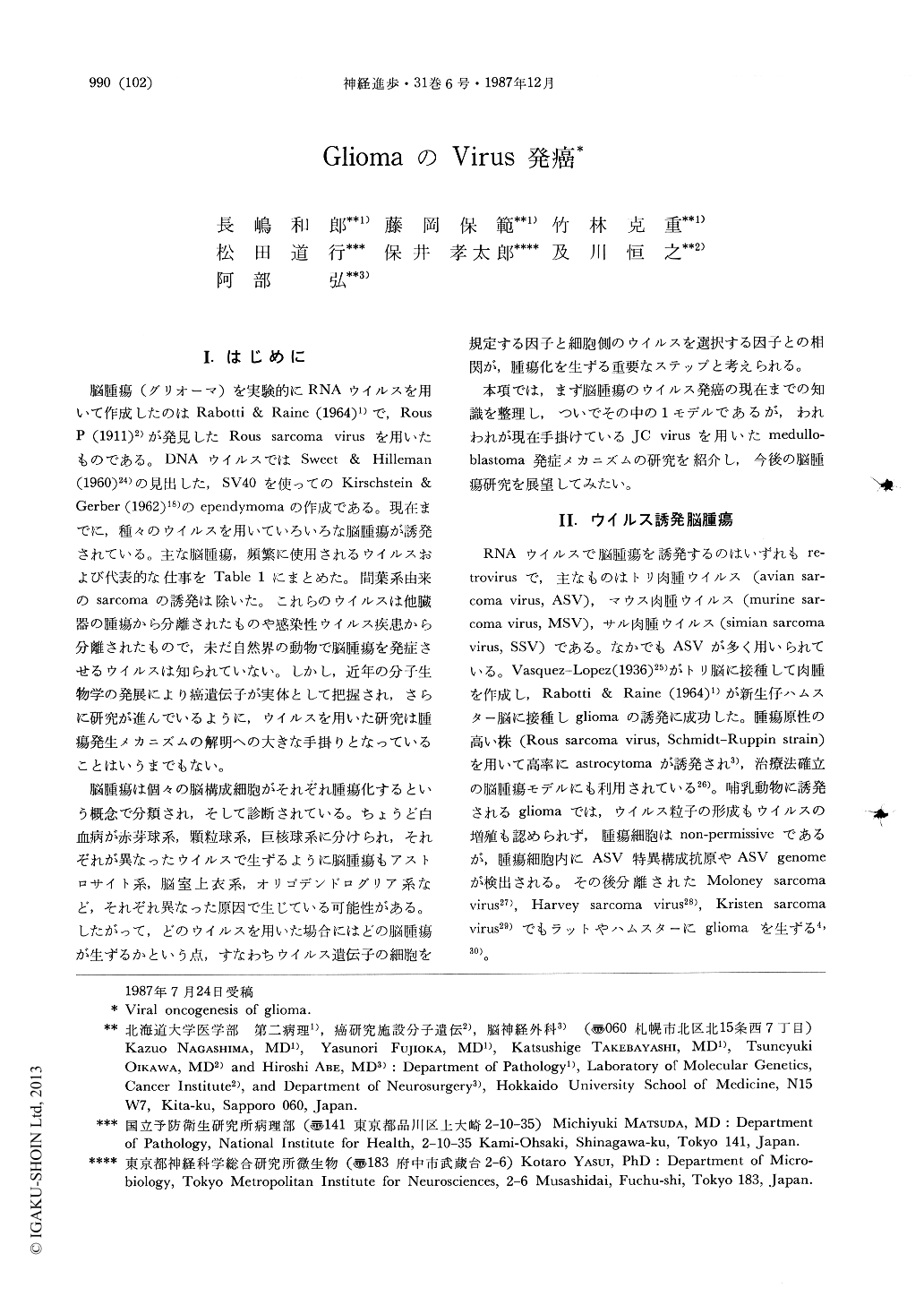Japanese
English
- 有料閲覧
- Abstract 文献概要
- 1ページ目 Look Inside
I.はじめに
脳腫瘍(グリオーマ)を実験的にRNAウイルスを用いて作成したのはRabotti & Raine(1964)1)で,Rous P(1911)2)が発見したRous sarcoma virusを用いたものである。DNAウイルスではSweet & Hilleman(1960)24)の見出した,SV40を使ってのKirschstein & Gerber(1962)18)のependymomaの作成である。現在までに,種々のウイルスを用いていろいろな脳腫瘍が誘発されている。主な脳腫瘍,頻繁に使用されるウイルスおよび代表的な仕事をTable1にまとめた。間葉系由来のsarcomaの誘発は除いた。これらのウイルスは他臓器の腫瘍から分離されたものや感染性ウイルス疾患から分離されたもので,未だ自然界の動物で脳腫瘍を発症させるウイルスは知られていない。しかし,近年の分子生物学の発展により癌遺伝子が実体として把握され,さらに研究が進んでいるように,ウイルスを用いた研究は腫瘍発生メカニズムの解明への大きな手掛りとなっていることはいうまでもない。
脳腫瘍は個々の脳構成細胞がそれぞれ腫瘍化するという概念で分類され,そして診断されている。ちょうど白血病が赤芽球系,顆粒球系,巨核球系に分けられ,それぞれが異なったウイルスで生ずるように脳腫瘍もアストロサイト系,脳室上衣系,オリゴデンドログリア系など,それぞれ異なった原因で生じている可能性がある。
The historical review of viral neurooncogenesis suggested that RNA viruses have largely induced astrocytoma and/or glioblastoma, while DNA viruses have ability to produce mainly primitive neuroectodermal tumors consisting of medulloblastoma, retinoblastoma and undifferentiated neuroectodermal tumors. Ependymomas and/or choroid plexus papillomas were the major products of DNA papovaviruses. These roughly specific relations between viruses and brain cells may contribute to further research on molecular level.
JC virus, a DNA papovavirus, has been shown to be highly neurooncogenic, and in particular induced medulloblastoma, providing the animal model for studying the origin of the tumor. In situ hybridization method using cloned mRNA probe which detects JC virus early T-antigen disclosed that the expression of mRNA was first found in the cells migrating from neonatal external granular layer to adult internal granular layer. This confirmed the concept for the first time that the cells in neonatal external layer of the maturing cerebellar cortex could be the target of the virus, with subsequent development of medulloblastoma.

Copyright © 1987, Igaku-Shoin Ltd. All rights reserved.


